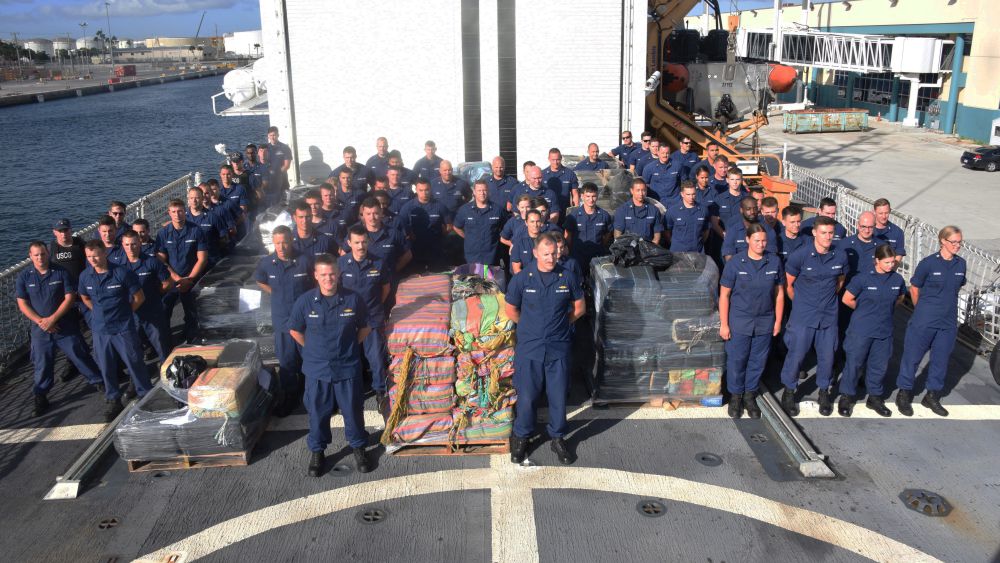Cutter Offloads 10 Tons of Cocaine in Port Everglades

On Tuesday, the U.S. Coast Guard cutter Spencer offloaded 10 tons of cocaine at a pier in Port Everglades, Florida – a haul worth a total wholesale value of about $300 million. This giant stockpile of narcotics represents the results of 13 separate interdictions conducted by six USCG cutters, the Steadfast, James, Alert, Vigorous, Spencer and Thetis, plus one more conducted by the buoy tender Aspen. Out of these vessels, the crew of the Oregon-based medium endurance cutter Alert were the most productive, capturing six drug running boats and about 1.5 tons of cocaine.
The Coast Guard said in a statement that the interdiction campaign is a cooperative effort involving seven federal agencies and multiple international partners. The DEA, FBI, CBP, ICE, Department of Justice, USCG and the Navy all work together to fight transnational organized crime networks in the Eastern Pacific.
"This offload today is not just the result of one unit, but the combined efforts of multiple Coast Guard cutters, aircraft and support, as well as that of our partners and allied men and women who continue to work day and night to stop these criminal organizations from profiting off transnational crime and smuggling," said Cdr. John Mctamney, CO of the Spencer. "While this offload represents approximately 10 tons of illicit drugs that will never hit out streets, it also represents a significant depletion to the cash flow to these criminal organizations."
During at-sea interdictions in international waters, a suspect vessel is located and tracked by allied, military or law enforcement personnel. The interdictions, including the boardings, are led and conducted by USCG personnel.
Each year, the Coast Guard and partner agencies remove about 20 percent of known drug shipments bound for American shores. Annually, the Coast Guard interdicts more than three times the amount of cocaine seized at America's land borders and within the U.S. combined. “We’ve tripled our removal rates but there’s a lot more work to be done,” said U.S. Coast Guard Commandant Adm. Paul Zukunft in September. Last fiscal year, Coast Guard crews seized over 455,000 pounds of cocaine worth over $6 billion wholesale, another record year for the service in counterdrug operations.
Earlier this year, Adm. Zukunft told the Washington Post that the interdictions are becoming routine. "We have seen a dramatic increase in cultivation and production," he said. "This is almost exclusively coming out of Colombia."
In 2015, Colombia stopped aerial application of the herbicide glyphosate over coca plantations, and the country's farmers are producing record volumes of the potent crop. In addition, U.S. officials contend that the peace accord between the Colombian government and the rebel group Revolutionary Armed Forces of Colombia (FARC) has slowed the pace of anti-narcotics efforts.
In addition, counternarcotics experts suggest that the resurgence of coca acreage is due in part to simple economics. Gold has fallen in price relative to the peak levels seen five years ago, reducing the profitability of illegal gold mining and pushing the rural poor back into coca farming. With so many factors favoring more production of drugs, cultivated coca acreage has doubled since 2012.
